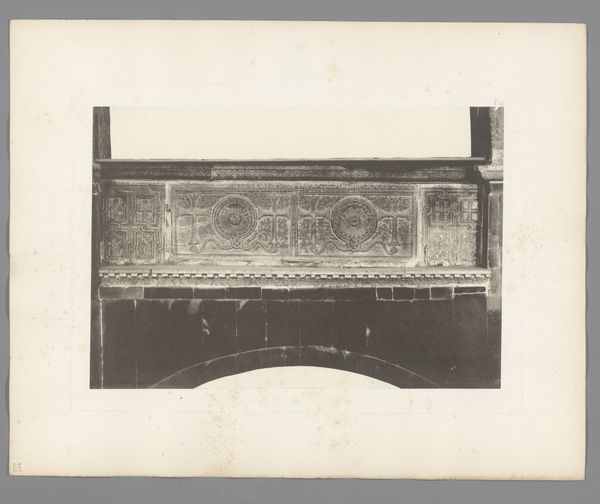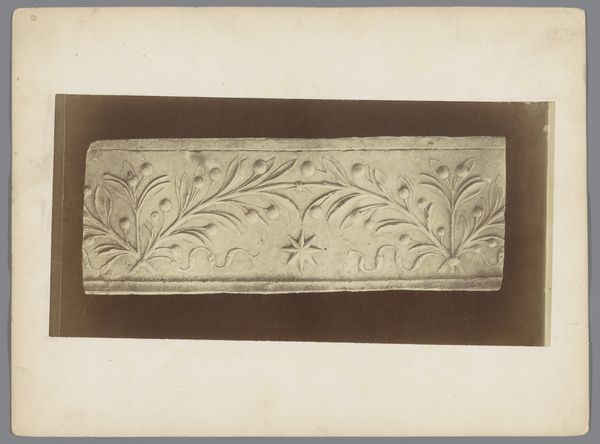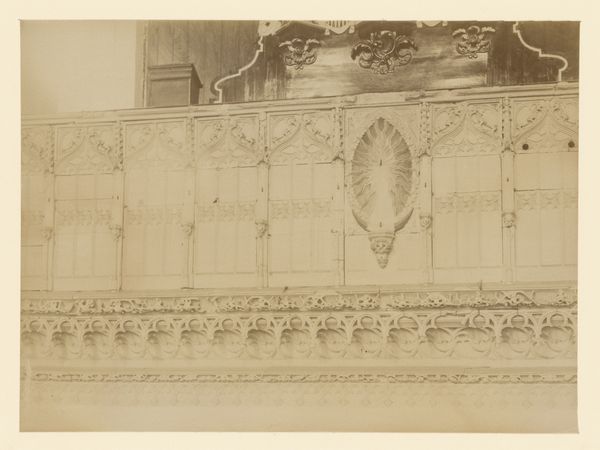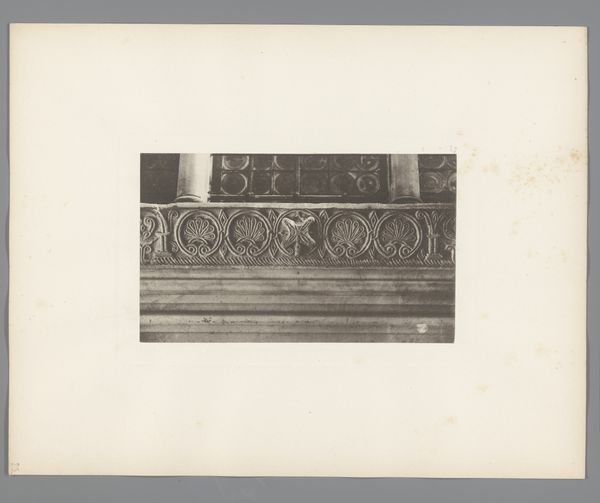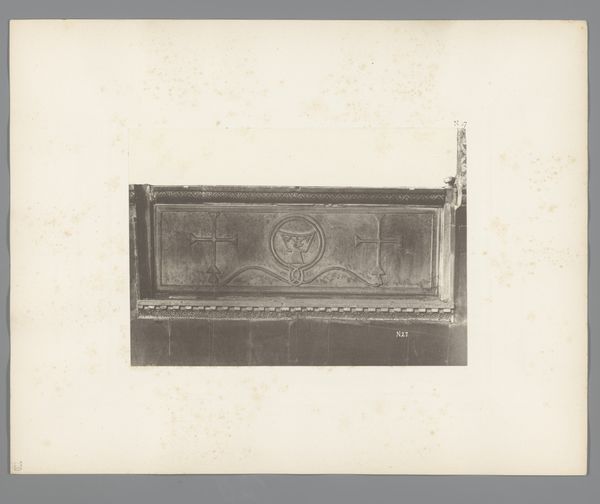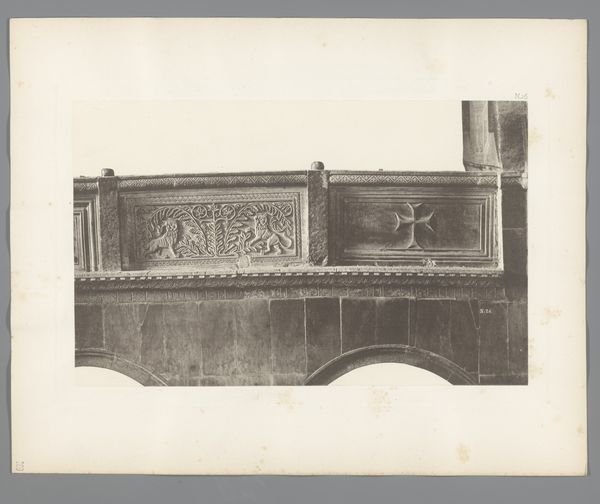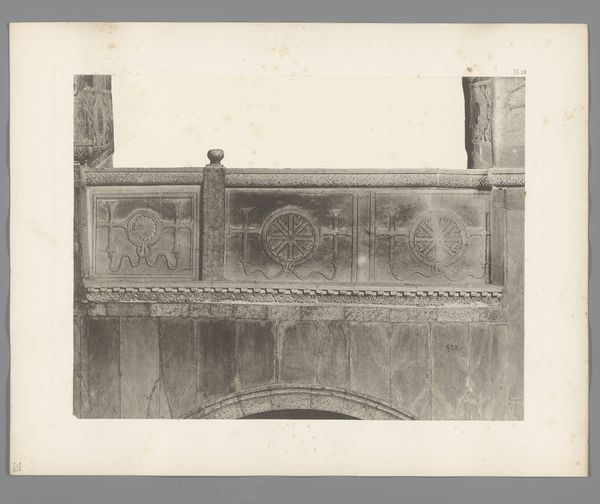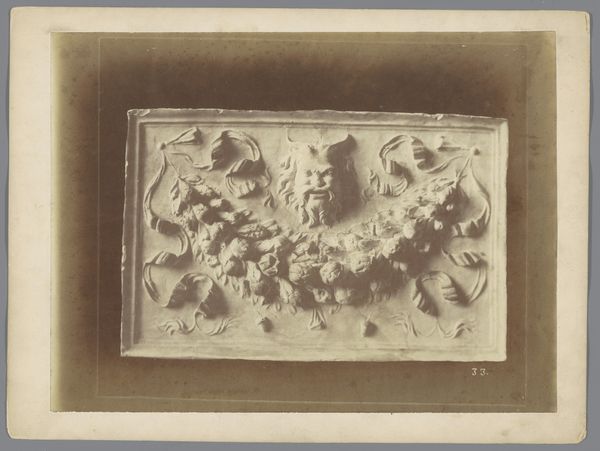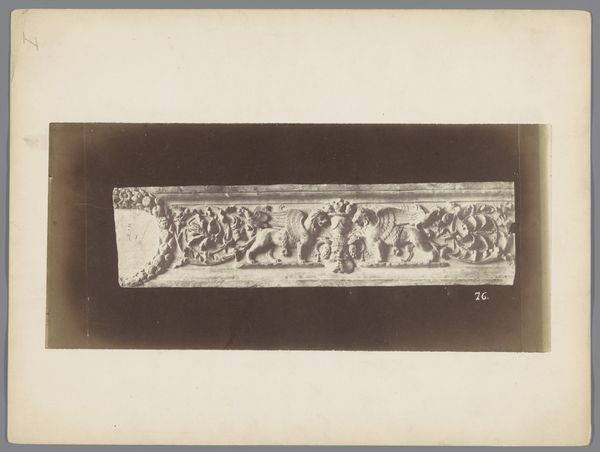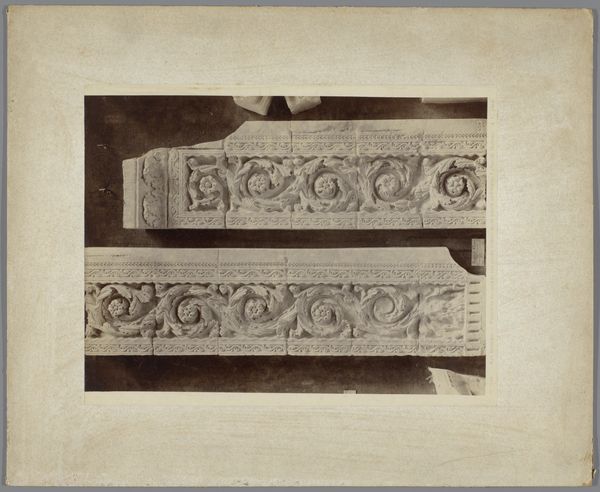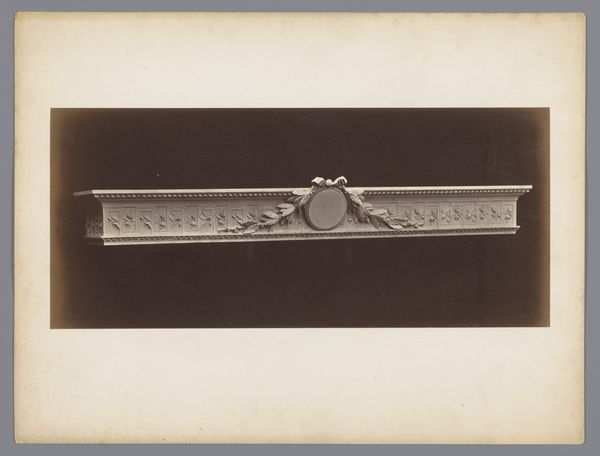
carving, print, relief, bronze, photography
#
medieval
#
carving
# print
#
relief
#
bronze
#
photography
#
geometric
Dimensions: height 303 mm, width 371 mm
Copyright: Rijks Museum: Open Domain
Curator: At first glance, there’s a quiet formality to this photograph. It has a kind of reserved elegance, wouldn't you agree? Editor: Absolutely. The composition is certainly very considered, creating an almost rhythmic harmony. Let's delve into the context. What we see here is a photographic print by Adolphe Giraudon, depicting a section of a capital from the Moissac Abbey, dating sometime between 1850 and 1900. It resides in the Rijksmuseum's collection. Curator: That repetition is key, the geometric structure punctuated by those avian forms, each carefully rendered. It speaks of medieval aesthetics but filtered through a 19th-century lens, capturing an archaeological artifact. Editor: Precisely. It's intriguing how Giraudon's photograph positions the Romanesque carving for the viewer. The light etches every contour of the stone surface in fascinating ways, highlighting a dynamic interplay between geometry and nature. These carvings, with their circular patterns interwoven with bird motifs, reflect a society deeply immersed in a visual language imbued with Christian symbolism. Curator: What about the institutional framework? Editor: The image acts almost like an index of architectural form, turning this ancient sculpture into documentation accessible for scholarly consumption, reinforcing a sense of history and place while shaping perception through selective framing. Curator: Yet it goes beyond pure documentation. It’s Giraudon's photographic art object. Editor: Indeed. Considering that museums safeguard the fragments of bygone cultures while creating dialogues with later audiences. Each element – form, iconography, and materiality – communicates subtle messages about the era that conceived it. Giraudon doesn't just photograph but actively participates in giving significance to this relic from another age. Curator: Examining it through these overlapping perspectives truly expands one's understanding. Editor: I concur; perceiving history within aesthetic representation offers compelling new appreciation.
Comments
No comments
Be the first to comment and join the conversation on the ultimate creative platform.

